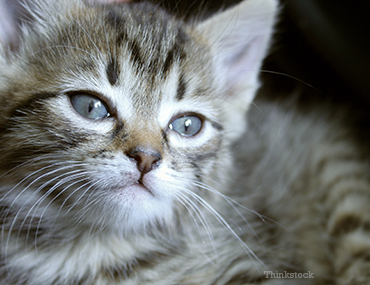
While quiet common in Dogs, bacterial infection of the bladder, or bacterial cystitis, is not seen as frequently in cats. Unfortunately, that means it’s often overlooked in cats altogether and/or mistreated.
What are the symptoms of bacterial cystitis in cats?
Symptoms associated with a bacterial cystitis can include:
- Hematuria (blood in the urine that may or may not be seen in a litter pan)
- Stranguria (straining and/or discomfort on urination)
- Pollakiuria (increased frequency of urination/trips outside or to the litter pan with typically smaller volumes)
- Incontinence/accidents (urinating in inappropriate places)
- Discomfort (evidenced by restlessness, abdominal pain, crying or excess grooming)
Some of these signs will be easy to recognize in an indoor cat that uses a litter pan, but more challenging in a cat that goes outside since we don’t tend to walk our cats outdoors and aren’t typically standing on top of them when they urinate. [Editor’s Note: This is one of many reasons why keeping your cat indoors is a safer than letting him out. Read more>]
Sometimes, there will be no symptoms whatsoever. In this case, you may only realize the infection exists if your veterinarian is doing routine screening tests or running tests for some other unrelated complaint.
In this case, you may only realize the infection exists if your veterinarian is doing routine screening tests or running tests for some other unrelated complaint.
Is my cat at risk of bacterial cystitis?
Bacterial cystitis occurs when bacteria find their way into the otherwise sterile environment of the bladder/urinary tract. There are certain circumstances that can increase your cat’s risk of developing a bladder infection including:
- The presence of bladder stones, crystals, polyps or tumors that can cause irritation and harbor bacteria
- An underlying medical condition, such as, feline leukemia virus, feline immunodeficiency virus, diabetes mellitus, hyperthyroidism, and chronic kidney disease
Can anything else cause cystitis?
Yes, other things can. The term cystitis only refers to any inflammation in the bladder. In bacterial cystitis that inflammation is due to a bacterial infection. However, bacterial cystitis accounts for only a small fraction of all feline cystitis cases—only 1-3% according to Alleice Summers, DVM. In her book, Common Diseases of Companion Animals, Alleice also outlines a study run at Ohio State. During this study 132 cats were examined specifically for symptoms of cystitis and 61% of them were found to have something called idiopathic cystitis –not a bacterial infection.
How do you confirm and treat bacterial cystitis?
A urine culture will help your veterinarian determine if your cat has an infection or not.
If bacteria are identified in your pet’s urine sample then an antibiotic sensitivity screening should be performed to determine the best antibiotic to use to treat your pet’s infection. Taking these steps in order to choose the correct antibiotic from the start can ultimately save you time and money; it can also save your pet from unnecessary discomfort associated with further delay in clearing the infection.
The timing and number of any follow-up visits and repeat cultures will depend on your pet’s individual situation. Your veterinarian may recommend repeating cultures during antibiotic therapy, even after your pet has finished the course of treatment, to be absolutely sure that the infection was resolved and that it did not recur.
One final note—If your cat is older and has bacterial cystitis in addition to kidney disease, be sure to ask your veterinarian if there is indication for long term (possibly lifelong) antibiotic treatment. Many of these cats never truly clear their infections. In which case, staying on antibiotics is better for the cat than intermittent treatment.
If you have any questions or concerns, you should always visit or call your veterinarian -- they are your best resource to ensure the health and well-being of your pets.
